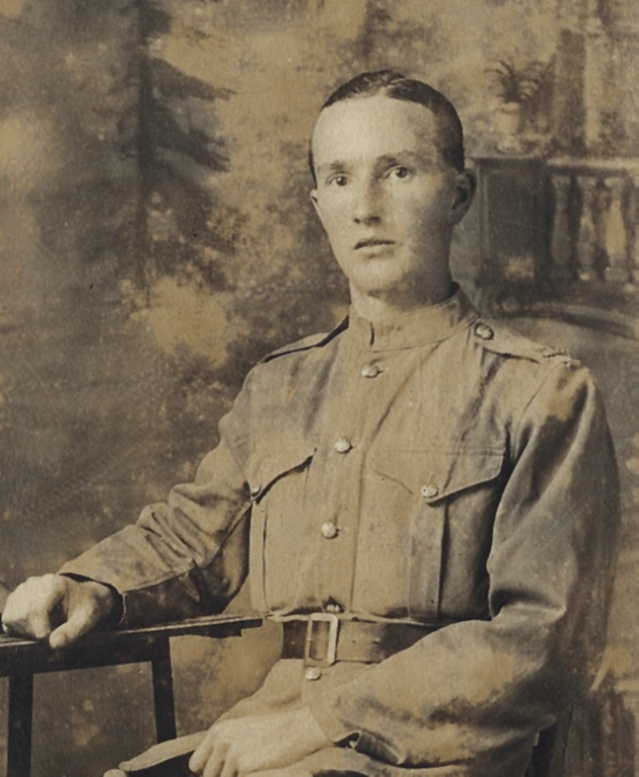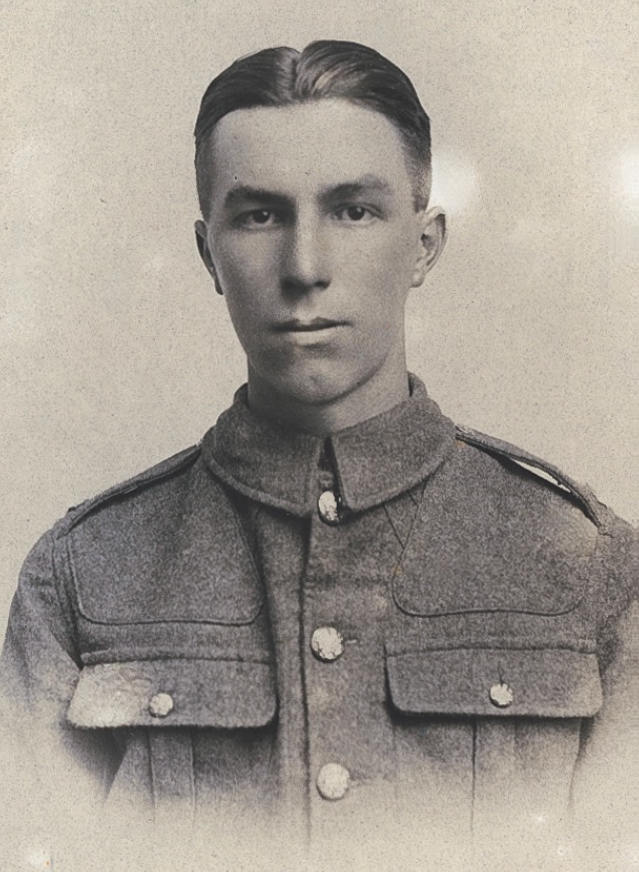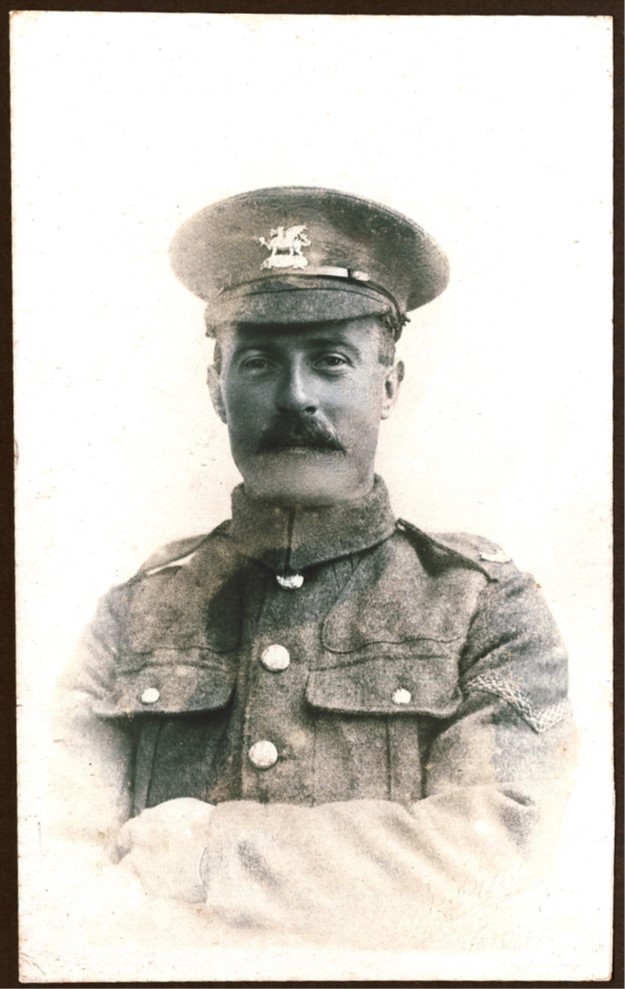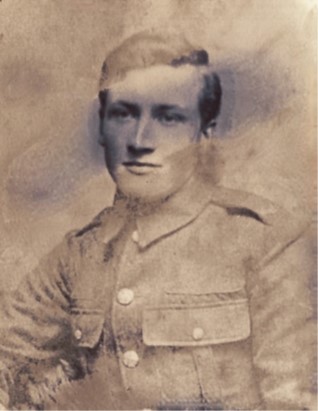Introduction to 1911: Everything in Its Proper Place?
Author: Esther Hamilton ACIfA
Famously, the First World War, on its remarkably swift onset, was optimistically named ‘The War to End All Wars’. Headlines moved at pace from “Aged Austria Emperor Loses his Nephew at an Assassin’s Hand” in June of 1914, to “Britain in a State of War with Germany” in August[i][ii].
But who were the people that received this news?
How did this global conflict impact their lives?
Edwardian Britain, emerging from the industrial and imperial legacy of the Victorian era, was entering a softly transitionary period. Politically, debates raged over Free Trade, Liberal welfare reforms, and the Irish Union, while in rural Britain, life was still described as a world where “everything and everybody fitted into its and his proper place – and everybody knew that place”[iii][iv].
Genealogical researcher (and Chilmington Green resident) Steven Bartlett has meticulously studied census records to unveil the lives of those living in or near the hamlet of Chilmington Green – it was they who would have read those increasingly alarming headlines in 1914.
To truly explore the political, cultural, economic, and psychological impact of the Great War on even this small rural community as part of our Chilmington at War theme, Steven’s research first paints a picture of life as it was in 1911. His findings also raise an intriguing question: was everyone truly in their “proper place”, or had a surprising number of people moved to Chilmington from elsewhere?
[i] The Daily Mirror front page, Monday, June 29, 1914
[ii] The Daily Mirror, Wednesday, August 5, 1914
[iii] Brooks, D. (1995) The Age of Upheaval: Edwardian Politics, 1899-1914
[iv] Briggs, A. (1960), They Saw it Happen; an Anthology of Eye-Witnesses’ Accounts of Events in British History, 1897-1940. 58
Chilmington at Peace – 1911
Author: Steven Bartlett
On Sunday the 2nd of April 1911, 19 homes handed in their returns for the 1911 Census. The enumerator recorded that they all lived in or near Chilmington Green. This snapshot in history paints a picture of a small close knit farming community. Families were linked by marriage, lives were intertwined. They made their living from the land. James Capeling was a brick maker, and Augustus Whitehead was a Butcher’s Assistant. Everyone else living in Chilmington of working age were either a farmer, working on a farm, or a house servant on one of the farms. Specific roles included gamekeepers, grooms, cowmen and waggoners. Perhaps surprisingly, many of the residents of Chilmington Green were not local. They came from places as far afield as Gloucestershire, Somerset and Norfolk to make this their home. But just three years later many of their young men would go to war. Some never to return. And the lives of those who remained in Chilmington Green would never be the same. This is their story.

1. The Long Family of Great Chilmington Farm
Edward and Rose Long ran the Great Chilmington Farm at the centre of the hamlet. Edward was originally from Gloucestershire and Rose was born in Sarre, Thanet in Kent. It was a real family affair. In addition to their three young children, Edward’s elderly mother and uncle lived with them. They also had two servants: Mabel Rose Neame aged just 15 was a domestic servant while 25-year-old Richard Philpott worked on the farm. (NOTE: By the time of the 1939 register Great Chilmington was owned by Harry and Elizabeth Jarvis. Their descendants run Jarvis Homes, one of the main building developers operating in Chilmington Green in 2025).
2. The Barton Family of Netters Farm

On the other side of the Lane to the Longs lived the Barton family of Netters Farm. George Barton was born in nearby Shadoxhurst while his wife Linda came from Whitstable. George and Linda had originally farmed in Shadoxhurst where their first two children were born. Then by 1909, when their youngest son arrived, they had taken over Netters farm. Two young men, Charles Vidon, aged 23 and William Chittenden aged 27, lived and worked on the farm as grooms. At the time of the 1939 Register, 67-year-old George Barton was still running Netters Farm even though he described himself as an invalid.
3. The Langdon Family of Chilmington Farm
The Langdon family lived in Chilmington Farm, a 12 roomed farmhouse, one of the largest in Chilmington. Although it is not specified in either the 1911 or the 1921 census which farm they occupied, the Langdon family were still running a farm in 1939 when it was stated that their home was Chilmington Farm. The head of the household was Norman Smyth Langdon who had been born in Brompton-Ralph in Somerset. By 1921 Norman Langdon, aged 34 and still single, was the only resident on the farm. However, he went on to marry Gladys Violet Chittenden from Cranbrook in 1926. And by 1939 Gladys’ elderly parents and aunt had come to live with them.
4. The Diamond Family of Bartlett Farm
500 metres along Bartlets Lane from Great Chilmington and Netters was Bartlett Farm, where the Diamond family lived. Isaac from Ruckinge and Mary Ann from Ashford started their married life in Graveney near Faversham where their eldest daughter was born in 1891. But by 1898, when their daughter Hilda was born, they lived and worked in Great Chart. Percy Whitehead aged 23 lived and worked with them on the farm. And on the night of 2 April, when the census took place, they had a visitor, Augustus Whitehead, a Butcher’s Assistant from Maidstone.
5. The Buckland Family
Harry and Maud Buckland ran one of the major farms in Chilmington Green. With twelve rooms, their farmhouse was also one of the largest in the hamlet. However, the Census record does not specify which farm the Bucklands lived at. In 2025 there are only four large farmhouses still standing (Great Chilmington, Netters, Chilmington and Bartlett) and these are all accounted for in 1911. Therefore, the Bucklands probably occupied a fifth large farmhouse on Bartlets Lane that existed in 1911 but has since been demolished. They clearly ran a successful business, employing a nurse to look after their two young children, a cook and a housemaid. By 1921 Maud Buckland was the only person recorded at this residence (which was then recorded as having 14 rooms).
6. The Santon Family of Little Chilmington
With seven rooms, George Santon lived in one of the larger houses in Chilmington Green. This 81-year-old widower still stated he was a farmer and lived with his two single children, Charles (who worked on the farm) and Ann both aged 48. Living with them was George Barman, a labourer, aged 72 (who died five years later at the age of 77).
7. James Capeling
In 1911 James Capeling described himself as a Brickmaker, living in a 4 roomed cottage. However, he had greater ambitions and 10 years later in the 1921 census he had taken over the Little Chilmington farm from George Santon.
8. The Bartons of Jones Lane Farm
Twelve-year-old Victor and eleven-year-old Claude lived at Jones Lane Farm (now Possingham Farm) with their father Edward Barton. Edward Barton was the brother of George Barton who ran Bartlett Farm. George had originally been a Butcher in Bethersden and Edward was his assistant. But by the turn of the century both brothers had become farmers. Edward had been left to raise his two young sons as well as run Jones Lane Farm after Edward’s wife, Emma died in 1908.
9. Shorters of New Street Farm
For Olive Shorter, farming was in the blood. From 1871 to 1891, her father John Shorter had run Malthouse Farm in Great Chart. Olive and her older brother Norman had grown up as young farmers. By 1901 John Shorter had taken over New Street Farm, but at 86 years of age, it was already clear that his daughter was in charge. Her brother had moved into Mock Lane, but his occupation as “Farmer’s Son” showed he was still very much part of the family business. When her parents died, the unmarried 42-year-old Olive took over the running of New Street Farm, where she was ably assisted by said brother’s son Norman John Shorter. It was not until 1920, at the age of 51, did Olive finally get married to Bert Potter.
10. The Light Family
Alexander Light was a professional Gamekeeper and had clearly moved around the country to find work. Originally from Bransgore in the New Forest, Hampshire, he had married Emily Elsie Evans in St Giles, Bloomsbury, London in 1890. Ten years later their son Edward had been born in Horsted, Sussex, and five years later they were living in Uckfield Sussex when their daughter Laura was born. Now settled in Chilmington Green, Alexander’s young niece and nephew were also living with them. It must have been quite a squeeze as the six of them lived in a house with just four rooms.
11. The Finnis Family
George Finnis was originally from Capel in Kent, and after marrying Margaret they lived in her home village of Newington near Folkestone, where their daughter Ethel was also born in 1908. Three years later they were settled in Chilmington Green, where George was a Waggoner on one of the local farms. They rented out one of their four rooms to Moses Russell aged 31 from Ireland, who was a cowman.
12. The Gould Family
Seven members of the Gould family plus two boarders lived in a five roomed house in Chilmington. Thomas Gould, head of the family, was a farm labourer as were his two sons, George and Frederick. He was a local man, born in Great Chart, as were all his children.
13. The Atmore Family
Henry Atmore originated from Norfolk and appeared to have travelled around as a wagoner. His wife Eliza was from Beckenham and his two grown up children, Henry and Eliza Annie, were born in Woodchurch and Pluckley.
14. The Mummery Family
At the age of 72 Stephen Mummery was still working as an agricultural labourer. He was a local man and although his wife Zillah had been born in Sandwich they had married in West Ashford in 1869 and his 31-year-old son William had been born in Great Chart. This would indicate that Stephen had lived in the village his whole life. In fact, Stephen’s ancestors had moved from Hawkinge to Great Chart in 1710. Although only William was left at home, Stephen and Zillah had had eleven children – a lot to raise in a four roomed house.
15. The Ashdown Family
Frederick Ashdown from Battle in Sussex married Beatrice Fellowes on 17 August 1907 in Icklesham, Sussex, Beatrice’s hometown. Shortly after they moved to Great Chart where Frederick worked as a Groom.
16. Henry and Eliza Finn
Henry and Eliza Finn were siblings. They were local people with Henry working as a farm labourer and Eliza working as a housekeeper, at one of the larger local farms. They lived on Mock Lane and to help pay for their six roomed house they had taken in a boarder, Thomas Mills from Gloucestershire, who was also a farm labourer.
17. George and Julia Burnham
The Burnham family lived at 1 Stone Cottages (as later detailed in the 1921 census). George worked at the Great Chilmington farm. But to understand this census return you must go back to 1891. In that year George Kemp and his wife Julia Kemp lived in Bethersden with their two young sons: Lewis George aged 4 and Percy Rowland aged 3. George Kemp had married Julia Ring in 1886 in West Ashford. Ten years later in 1901, still living in Bethersden, they had all changed their surname to Burnham. There is no evidence as to why they changed their surname, and it looks even stranger when in 1911 the parents had kept the new surname, but the two sons had reverted to Kemp. George had also made a mess of the census form by filling in details of his older sons who no longer lived with them – already serving as a soldier in 1911, and Rowland now lived with his wife in another cottage in Chilmington.
18. The Kemp Family
Percy Rowland Kemp was the son of George and Julia Burnham/Kemp and lived in Mock lane with his wife Agnes and son Frederick. Agnes had grown up living in Mock Lane, daughter of Norman Shorter and niece of Olive Shorter. Rowland, as he called himself, had married Agnes Shorter in June 1910 shortly after the arrival of their son Frederick on 9 Dec 1909. Agnes was just 16 at the time (born 8 August 1893). They went on to have three more children: Louis George 1915, Norman G 1919, and Raymond John 1923.
19. The Harvill Family
In an example of more blurred social lines and cross-country movement than this Edwardian hamlet would otherwise suggest, Edgar Harvill, who worked as a Groom, is another resident of Chilmington Green who had moved around before settling in Chilmington Green. His daughter had been born in Canterbury only a year earlier, so he was a relative newcomer to the hamlet. He was also an elusive character. He stated he was born in Brighton, but there is no record of that. He said he married Daisy in 1908, but there is no record of that. Daisy Robinson had previously married Alfred Long on 10 May 1903 in Hackney, London. She had two children from that marriage. But there is no suitable death record for Alfred Long that would indicate Daisy was a widow. So, was Edgar Harvill not all that he made out to be? Was he not in his ‘proper place’?
Chilmington at War: the Impact of World War I
Author: Esther Hamilton
Just three years after the 1911 census had taken place, Britain declared war on Germany.
Unlike previous wars, the natural fortresses that make up the British Isles, comfortably protected by the British Navy, were no longer cut off from conflicts abroad: the first German bomb launched towards England struck Dover in 1914, and the Kentish Home Front, laying in the path from the continent towards the imperial metropolis of London, was at higher risk than most civilian areas.
Between August and September of 1914, amongst the military commandeering of horses, governmental seizure of the railways, and the panic buying of food, 761,824 men across the UK volunteered to join the British Army[i][ii][iii][iv].
Of our nineteen 1911 Chilmington households, nine men would go to war.
[i] Dover Express, Friday 7th August 1914.
[ii] Gould, D. (1981) The South Eastern and Chatham Railway in the 1914–18 War
[iii] Ogley, B. (1996) Kent, a Chronicle of the Century, vol.1
[iv] Army Council (1921). General Annual Reports on the British Army (including the Territorial Force) for the Period from 1st October 1913, to 30th September 1919. Parliamentary Paper 1921, XX, Cmd.1193. Parliament United Kingdom.
1. The Barton Family of Netters Farm
The two grooms working at Netters Farm that had been listed in the 1911 census, Charles Videon and William Chittenden both served on the Western Front. Both unmarried and a spritely 23 and 27 in 1911, Vidion and Chittenden, now 26 and 30, would be among the volunteer soldiers who left home in 1914.
George Barton’s son, Frederick Barton, 14 at the outbreak of war, and too young to feature on the 1914 Roll of Honour, would later serve as a private in the Norfolk Regiment’s 4th Battalion’s Territorial Force. Frederick Barton and Charles Chittenden (pictured) would survive the war.
The younger groom, Charles Vidion, would die in France on Sunday, the 23rd of December 1917.

2. The Bartons of Jones Lane Farm
Sixteen and fifteen on the onset of war, and only just coming of age at their small family farm run by their widower father, Edward, Claude and Victor Barton would both serve as Privates on the western front.

Edward would be sent to the same battalion as the Netters Farm Barton, Frederick, the Norfolk Regiment’s 4th (Territorial Force), while Victor (pictured above) fought in the 2nd Battalion of the newly formed Machine Gun Corps, a battalion created amidst the increasingly mechanised warfare on the frontlines. They would both survive the war.

3. Olive Shorter of New Street Farm
Our stalwart Olive Shorter’s’ other brother, Charles Shorter (b. 1882 in Great Chart), had moved to Kennington, London, in 1901, and was thus not on the 1911 census, before serving as a Private in the 8th Battalion of Royal Inniskilling Fusiliers, and died aged 35 on Thursday 16th August, 1917 in what would be called the Battle of Langemarck, alongside an estimated other 60,000 casualties.
Olive’s nephew, John (pictured), would serve as a Private in The Buffs (East Kent Regiment) and 2/5th Weald of Kent Battalion, and would survive the war.

4. The Light Family
George Light, the young nephew of the more geographically adventurous villagers of Chilmington Green and professional gamekeeper Alexander Light would go onto serve in The Queen’s Royal West Surrey as a Private. He wrote with some zeal in 1917 while recuperating from his injuries in Liverpool that he “had no bones broken”. He would survive the war.

5. The Finnis Family
Alfred and Henry Finnis were living in Chilmington before the war, as stated in their service records. They were related to our 1911 Chilmington Finnis family, George and Margaret. Alfred would serve as a private in the West Yorkshire Regiment on the western front, while Henry Finnis would also serve in the West Yorkshire Regiment as a private, but as part of the Territorial Forces, with the latter sending a Christmas card to the Friends of Great Chart that makes up part of our Elizabeth Quinton Strouts archive.
6. George and Julia Burnham
Althoughhe had not lived with the Burnhams/ Kemps for some time at the taking of the 1911 census, Lewis George Kemp’s name (as simply George Kemp, as in the census) is included in the 1914 Roll of Honour display put together by the Friends of Great Chart group in support of those serving from the local area.
George/Lewis (we must assume he preferred the former) is our study’s most senior non-commissioned soldier, reaching the rank of Company Seargeant Major by the end of the war, and was the only individual included in our study who was already a professional soldier in 1914. Even more unusually, Kemp’s regiment, the 2nd Battalion of the Queen’s Own Royal West Kent Regiment, were sent to Multan in India in August of 1914, and would later move to Mesopotamia, where the battalion remained for the duration of the war.

